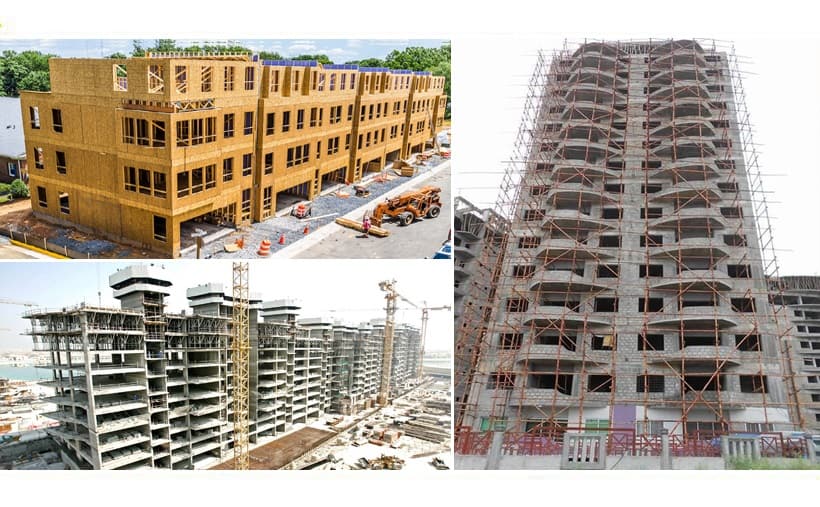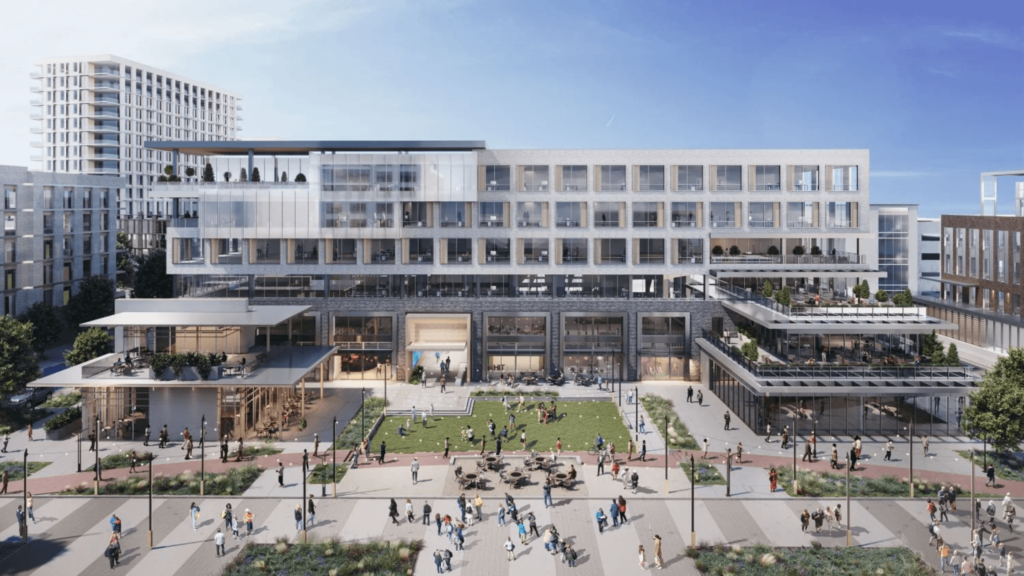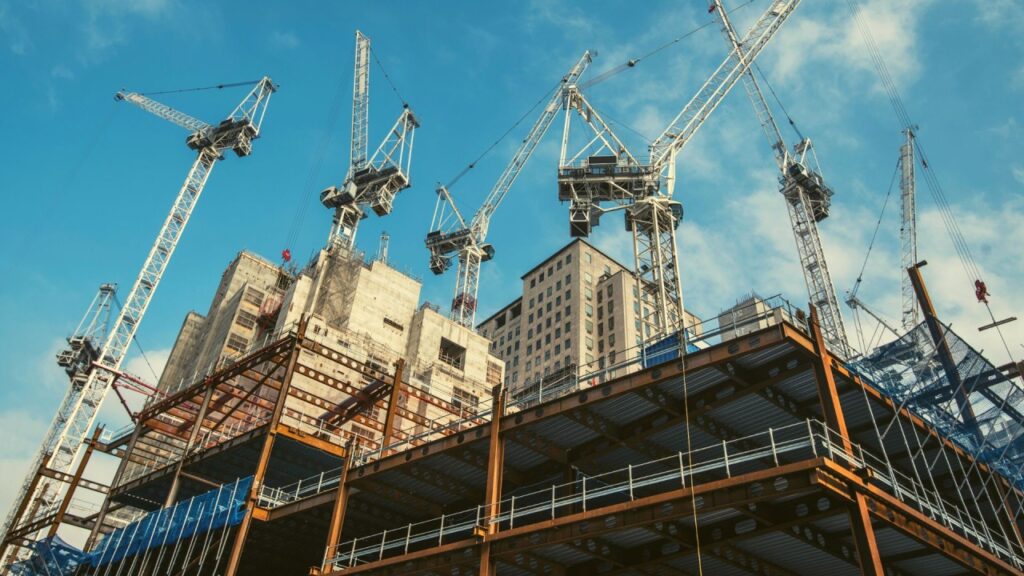Building projects, whether a small backyard shed or a multi-million dollar skyscraper, represent a significant undertaking. They require careful planning, meticulous execution, and a thorough understanding of various factors, from design and materials to regulations and budget management. This comprehensive guide, “Building Projects: From Dream to Reality,” will walk you through the entire process, providing valuable insights and practical advice for successfully bringing your building project to life.

1. Defining Your Project: Vision, Goals, and Scope
The first and arguably most crucial step is clearly defining your project. This involves articulating your vision, establishing realistic goals, and defining the project’s scope.
- Vision: What is the ultimate purpose of this building project? Is it to create a comfortable family home, a functional office space, a revenue-generating rental property, or a community center? Articulating your vision provides a guiding principle throughout the entire process.
- Goals: Define specific, measurable, achievable, relevant, and time-bound (SMART) goals. Examples include:
- Staying within a specific budget.
- Completing the project within a defined timeframe.
- Achieving a specific energy efficiency rating.
- Creating a building that meets specific accessibility requirements.
- Maximizing the return on investment (ROI).
- Scope: Clearly define the boundaries of the project. What is included, and what is excluded? This helps to avoid scope creep, which can lead to increased costs and delays. Consider:
- The size and layout of the building.
- The materials to be used.
- The level of finishing detail.
- The landscaping and site improvements.
- Any necessary demolition or site preparation work.
Once you have a clear vision, defined goals, and a well-defined scope, document them thoroughly. This document will serve as a roadmap throughout the project.

2. Assembling Your Team: Architects, Engineers, and Contractors
Building projects typically require the expertise of various professionals. Carefully selecting your team is essential for success.
- Architect: An architect translates your vision into detailed drawings and specifications. They are responsible for the design, aesthetics, functionality, and compliance with building codes.
- Selecting an Architect:
- Review their portfolio and previous work.
- Check their qualifications and licenses.
- Discuss your vision and goals in detail.
- Obtain multiple quotes and compare their fees and services.
- Choose an architect whose style and experience align with your project.
- Selecting an Architect:
- Structural Engineer: A structural engineer ensures that the building is structurally sound and can withstand the anticipated loads and stresses. They design the foundation, framing, and other structural elements.
- When is a Structural Engineer Needed?
- Any building project that involves structural modifications or new construction.
- Projects in areas with high seismic activity or strong winds.
- Projects that require complex or unusual designs.
- When is a Structural Engineer Needed?
- General Contractor (GC): The general contractor is responsible for overseeing the entire construction process. They manage subcontractors, procure materials, and ensure that the project is completed on time and within budget.
- Selecting a General Contractor:
- Obtain multiple bids and compare their prices, experience, and references.
- Check their license and insurance.
- Review their past projects and contact previous clients.
- Ensure they have a solid track record of completing projects successfully.
- Choose a contractor with whom you feel comfortable communicating and collaborating.
- Selecting a General Contractor:
- Subcontractors: Specialized tradespeople hired by the general contractor to perform specific tasks, such as:
- Electricians
- Plumbers
- HVAC technicians
- Carpenters
- Roofers
- Painters
- Landscapers
3. Design and Planning: From Concept to Blueprints
The design and planning phase is where your vision takes shape and is translated into detailed blueprints and specifications.
- Schematic Design: The initial phase where the architect develops preliminary sketches and concepts based on your requirements and the site conditions.
- Design Development: The architect refines the schematic design, developing more detailed drawings and specifications, including floor plans, elevations, and sections.
- Construction Documents: The final phase where the architect prepares a complete set of construction documents, including detailed drawings, specifications, and schedules, that are used for bidding and construction.
- Important Design Considerations:
- Functionality: Ensure the building is designed to meet your specific needs and requirements.
- Aesthetics: Choose a design that is visually appealing and complements the surrounding environment.
- Sustainability: Incorporate energy-efficient and environmentally friendly design features.
- Accessibility: Design the building to be accessible to people of all abilities.
- Cost-Effectiveness: Design the building to be cost-effective to construct and maintain.
4. Permits and Regulations: Navigating the Bureaucracy
Building projects are typically subject to various permits and regulations. Understanding and complying with these requirements is essential to avoid delays and legal issues.
- Building Permits: Required for most construction projects to ensure compliance with building codes and zoning regulations.
- Zoning Regulations: Govern land use, building height, setbacks, and other aspects of development.
- Environmental Regulations: May apply to projects that involve wetlands, endangered species, or other sensitive environmental resources.
- Accessibility Regulations: Ensure that buildings are accessible to people with disabilities, complying with the Americans with Disabilities Act (ADA) or similar regulations.
- Fire Codes: Regulate fire safety measures, such as fire alarms, sprinklers, and fire-resistant materials.
- Working with Local Authorities:
- Contact your local building department to determine the required permits and regulations.
- Submit your plans and applications in a timely manner.
- Attend any required meetings or hearings.
- Respond promptly to any requests for information or revisions.
5. Budgeting and Financing: Keeping Costs Under Control
Developing a realistic budget and securing financing are critical for ensuring the financial viability of your building project.
- Creating a Detailed Budget:
- Obtain accurate cost estimates for all aspects of the project, including materials, labor, permits, and fees.
- Include a contingency fund to cover unexpected expenses.
- Track your spending carefully and make adjustments as needed.
- Sources of Financing:
- Personal savings
- Mortgages
- Construction loans
- Government grants
- Private investors
- Cost-Saving Strategies:
- Value engineering: Identifying ways to reduce costs without compromising quality or functionality.
- Negotiating with contractors and suppliers.
- Choosing cost-effective materials and finishes.
- Performing some of the work yourself (if you have the skills and time).
6. Construction Phase: Bringing the Design to Life
The construction phase is where the design is translated into a physical structure. This phase requires careful coordination, communication, and supervision.
- Site Preparation: Clearing the site, grading the land, and installing utilities.
- Foundation: Constructing the foundation to provide a stable base for the building.
- Framing: Erecting the structural framework of the building.
- Roofing: Installing the roof to protect the building from the elements.
- Exterior Finishes: Applying siding, brick, or other exterior finishes to the building.
- Interior Finishes: Installing drywall, flooring, cabinets, and other interior finishes.
- MEP Systems: Installing mechanical, electrical, and plumbing (MEP) systems.
- Landscaping: Completing the landscaping and site improvements.
- Importance of Communication:
- Regular communication between the owner, architect, and contractor is essential.
- Hold regular site meetings to discuss progress, address issues, and make decisions.
- Document all communication and agreements in writing.
7. Managing the Construction Process: Staying on Track
Effective project management is crucial for keeping the construction process on track and within budget.
- Project Schedule: Develop a detailed project schedule that outlines the tasks, milestones, and deadlines.
- Progress Tracking: Regularly monitor progress against the schedule and identify any potential delays.
- Change Management: Establish a process for managing changes to the scope, design, or budget.
- Quality Control: Implement quality control measures to ensure that the work is performed to the required standards.
- Risk Management: Identify potential risks and develop mitigation strategies.
- Using Project Management Software: Tools like Asana, Trello, or specialized construction management software can help track progress, manage tasks, and communicate with the team.
8. Inspections and Approvals: Ensuring Compliance
Throughout the construction process, inspections are conducted by local authorities to ensure compliance with building codes and regulations.
- Common Inspections:
- Foundation inspection
- Framing inspection
- Electrical inspection
- Plumbing inspection
- HVAC inspection
- Final inspection
- Correcting Deficiencies: If any deficiencies are identified during an inspection, they must be corrected before the project can proceed.
- Certificate of Occupancy (CO): Once all inspections are passed and the project is completed, a certificate of occupancy is issued, allowing the building to be legally occupied.
9. Final Walk-Through and Punch List: Addressing Last Details
Before the project is officially completed, conduct a final walk-through with the contractor to identify any remaining issues or deficiencies.

- Creating a Punch List: Compile a detailed list of all items that need to be corrected or completed.
- Addressing the Punch List: Ensure that the contractor addresses all items on the punch list in a timely manner.
- Final Payment: Make the final payment to the contractor once all work is completed to your satisfaction.
10. Post-Construction: Maintenance and Warranties
After the building project is completed, it’s important to establish a plan for maintenance and to understand the warranties that are in place.
- Maintenance Plan: Develop a regular maintenance schedule to ensure that the building remains in good condition.
- Warranties: Understand the warranties that are provided by the contractor, subcontractors, and suppliers.
- Documentation: Keep all documentation related to the project, including plans, specifications, permits, contracts, and warranties, in a safe and accessible location.
11. Case Studies: Learning from Real-World Examples
Examining case studies of successful and unsuccessful building projects can provide valuable insights and lessons learned.
- Analyzing Success Stories: Identify the factors that contributed to the success of the project, such as careful planning, effective communication, and strong leadership.
- Learning from Mistakes: Understand the challenges and pitfalls that were encountered in unsuccessful projects and how they could have been avoided.
- Examples: Research case studies on sustainable building projects, complex renovations, or large-scale commercial developments to gain practical knowledge.
12. Technology in Building Projects: Enhancing Efficiency and Collaboration
Technology is playing an increasingly important role in building projects, enhancing efficiency, collaboration, and communication.
- Building Information Modeling (BIM): A digital representation of the physical and functional characteristics of a building.
- Project Management Software: Tools for tracking progress, managing tasks, and communicating with the team.
- Mobile Apps: Apps for site documentation, inspections, and communication.
- Drones: Used for aerial surveys, site monitoring, and inspections.
- 3D Printing: Used for creating custom building components and even entire buildings.
13. Green Building Practices: Creating Sustainable Structures
Incorporating green building practices into your project can reduce its environmental impact and improve its energy efficiency.
- Energy Efficiency: Designing the building to minimize energy consumption.
- Water Conservation: Implementing water-saving measures, such as low-flow fixtures and rainwater harvesting.
- Sustainable Materials: Using environmentally friendly and recycled materials.
- Indoor Air Quality: Ensuring good indoor air quality by using low-VOC paints and finishes and providing adequate ventilation.
- LEED Certification: Obtaining Leadership in Energy and Environmental Design (LEED) certification to demonstrate your commitment to sustainability.
14. Common Mistakes to Avoid: Steering Clear of Pitfalls
Many common mistakes can derail building projects. Being aware of these pitfalls can help you avoid them.
- Underestimating the Budget: Failing to account for all costs, including contingencies.
- Poor Planning: Not developing a detailed plan and schedule.
- Inadequate Communication: Failing to communicate effectively with the project team.
- Scope Creep: Allowing the scope of the project to expand without proper planning and budgeting.
- Poor Contractor Selection: Choosing a contractor based solely on price without considering their experience and reputation.
- Ignoring Permits and Regulations: Failing to obtain the necessary permits and approvals.
- Neglecting Quality Control: Not implementing quality control measures to ensure that the work is performed to the required standards.
15. Conclusion: Building Your Dream – A Rewarding Journey
Building projects, while complex and challenging, can be incredibly rewarding. By following the steps outlined in this guide, assembling a skilled team, and carefully managing the process, you can successfully bring your building project from dream to reality. Remember to prioritize planning, communication, and attention to detail, and you’ll be well on your way to creating a building that meets your needs, exceeds your expectations, and stands the test of time. The journey of a building project is an investment in the future, and with careful preparation, it can be a truly fulfilling experience.